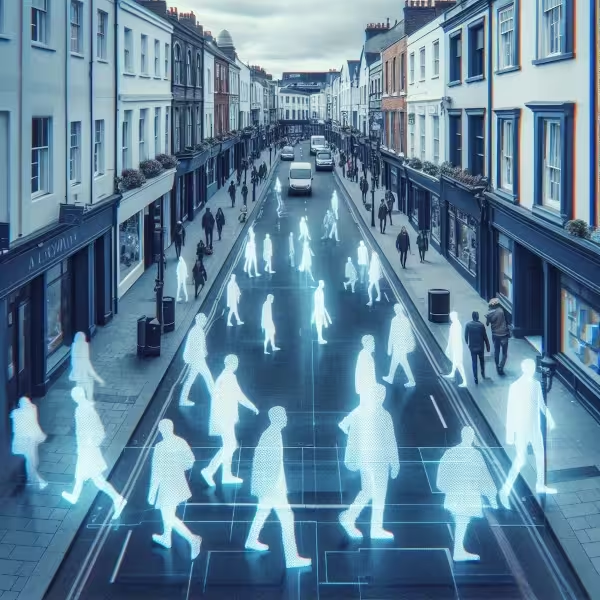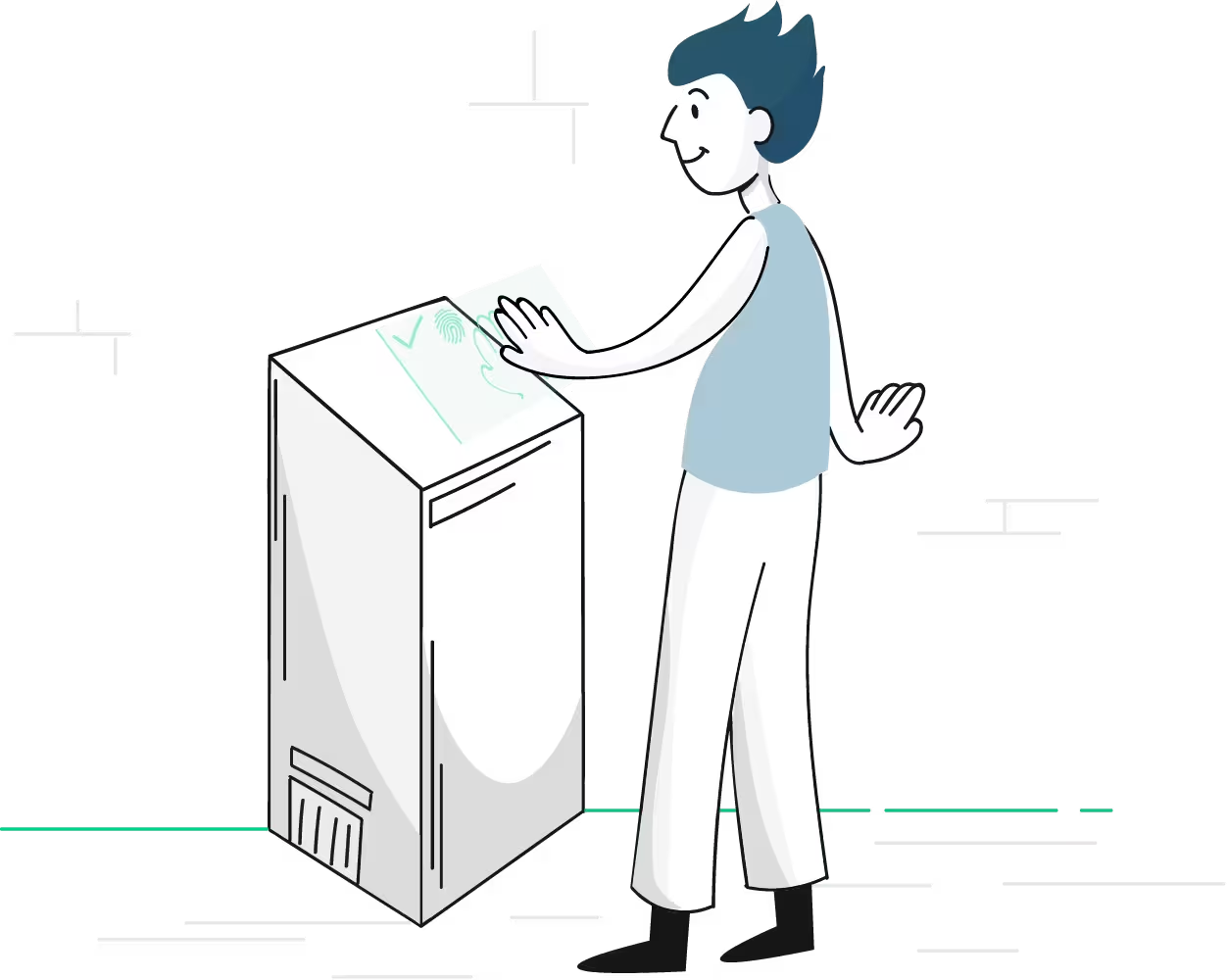The Power of Deep Learning in Computer Vision.
AI Computer Vision is a branch of artificial intelligence (AI) that allows computers to extract meaningful information from digital images, videos, and other visual inputs, enabling them to make decisions or recommendations. While AI allows computers to think, computer vision enables them to see and understand visual data. Deep learning algorithms have significantly enhanced computer vision by improving the accuracy of tasks like image recognition, object detection, and segmentation. These models can automatically analyze and interpret visual data, reducing the need for manual intervention, streamlining workflows, and saving time and resources. They can handle large-scale datasets and are easily scalable, making them ideal for applications such as surveillance systems and autonomous vehicles. More and more industrial sectors are relying on artificial intelligence services both the benefits are significant.

Tailored AI Solutions for Advanced Image Processing.
We leverage our expertise and passion to create custom AI solutions for your complex image processing and analysis needs. Our team of data scientists, software engineers, and machine learning engineers work together to design advanced AI models. These models convert raw visual data into valuable, actionable insights, giving you a competitive advantage. Whether it’s object detection, facial recognition or other computer vision challenges, we support you every step of the way. We are dedicated to providing innovative, scalable, and reliable AI solutions to help you optimize processes, improve decision-making, and elevate your business.
We support you at every stage of your project.
Building an algorithmic model for image processing requires many steps. It is crucial that our experts intervene at the start of the project to help qualify the data to be collected.
Understanding your needs
During the initial study phase, we work with you to thoroughly understand your project requirements, objectives, and constraints. This involves analyzing your business needs, assessing the technical feasibility, and defining the scope of the project. Our experts provide strategic insights and recommendations to help you achieve your goals effectively.
Data Collection and Preprocessing
The dataset phase focuses on collecting, curating, and preparing the data necessary for your AI computer vision solution. We assist in sourcing high-quality, relevant datasets, ensuring they are properly labeled and annotated to enhance the accuracy and reliability of the AI models. Our team also helps in data augmentation and preprocessing to improve model performance.
- Gather a diverse dataset of images relevant to your problem.
- Clean and preprocess the data by resizing, normalizing, and augmenting it.
- Split the dataset into training, validation, and test sets.
Model Selection and Training
The modeling phase involves developing and training AI models tailored to your specific requirements. Utilizing state-of-the-art machine learning frameworks and tools, we create models that accurately interpret and analyze visual data. Our team ensures that the models are robust, scalable, and capable of delivering precise results.
- Choose an appropriate model architecture.
- Train the model using the collected dataset.
- Optimize hyperparameters (learning rate, batch size, etc.).
Post-Processing and Deployment
Once the models are developed, the processing phase begins. This stage involves integrating the AI models into your existing systems and workflows. We provide support in optimizing the processing pipelines, ensuring seamless operation and real-time performance. Our experts also assist in deploying the models on various platforms, from cloud-based systems to edge devices.
- Evaluate the model’s performance on the validation set.
- Apply post-processing steps to refine the model’s predictions.
- Deploy the model in your desired environment (cloud, edge device, etc.).
Real-World Testing and Monitoring
The final phase is rigorous testing to validate the performance and reliability of the AI computer vision solution. We conduct extensive testing under diverse conditions to ensure the models meet the desired accuracy and robustness standards. Our team works closely with you to fine-tune the system based on feedback and real-world performance, ensuring it consistently meets your business objectives.
- Test the model on real-world data.
- Monitor its performance and make adjustments as needed.
- Keep refining the model based on user feedback and new data.
Step 1
Understanding your needs
During the initial study phase, we work with you to thoroughly understand your project requirements, objectives, and constraints. This involves analyzing your business needs, assessing the technical feasibility, and defining the scope of the project. Our experts provide strategic insights and recommendations to help you achieve your goals effectively.
Step 2
Data Collection and Preprocessing
The dataset phase focuses on collecting, curating, and preparing the data necessary for your AI computer vision solution. We assist in sourcing high-quality, relevant datasets, ensuring they are properly labeled and annotated to enhance the accuracy and reliability of the AI models. Our team also helps in data augmentation and preprocessing to improve model performance.
- Gather a diverse dataset of images relevant to your problem.
- Clean and preprocess the data by resizing, normalizing, and augmenting it.
- Split the dataset into training, validation, and test sets.
Step 3
Feature Extraction and Representation
In the extraction phase, we employ advanced techniques to identify and extract critical features from the visual data. This involves using sophisticated algorithms to detect patterns, objects, and other relevant information within images and videos. Our extraction process is designed to maximize the efficiency and effectiveness of subsequent modeling efforts. Common techniques include:
- SIFT (Scale-Invariant Feature Transform): Identifies local features like corners or blobs in images.
- HOG (Histogram of Oriented Gradients): Captures edge and texture information.
- CNN (Convolutional Neural Networks): Automatically learns hierarchical features.
Step 4
Model Selection and Training
The modeling phase involves developing and training artificial intelligence models tailored to your specific requirements. Utilizing state-of-the-art machine learning frameworks and tools, we create models that accurately interpret and analyze visual data. Our team ensures that the models are robust, scalable, and capable of delivering precise results.
- Choose an appropriate model architecture.
- Train the model using the training data.
- Optimize hyperparameters (learning rate, batch size, etc.).
Step 5
Post-Processing and Deployment
Once the models are developed, the processing phase begins. This stage involves integrating the artificial intelligence models into your existing systems and workflows. We provide support in optimizing the processing pipelines, ensuring seamless operation and real-time performance. Our experts also assist in deploying the models on various platforms, from cloud-based systems to edge devices.
- Evaluate the model’s performance on the validation set.
- Apply post-processing steps to refine the model’s predictions.
- Deploy the model in your desired environment (cloud, edge device, etc.).
Step 6
Real-World Testing and Monitoring
The final phase is rigorous testing to validate the performance and reliability of the AI computer vision solution. We conduct extensive testing under diverse conditions to ensure the models meet the desired accuracy and robustness standards. Our team works closely with you to fine-tune the system based on feedback and real-world performance, ensuring it consistently meets your business objectives.
- Test the model on real-world data.
- Monitor its performance and make adjustments as needed.
- Keep refining the model based on user feedback and new data.
Embedded AI Solutions for Resource-Constrained Environments.
At id3 Technologies, we specialize in Embedded AI algorithms, ensuring high performance while optimizing resource consumption. Our approach focuses on creating efficient algorithms that deliver robust and accurate results with minimal computational power and memory usage. This makes it ideal for applications such as IoT devices, mobile platforms, and edge computing. By leveraging Embedded artificial intelligence, we enable real-time processing and decision-making capabilities even in resource-constrained environments, enhancing functionality and reliability. Our solutions are designed to be scalable and adaptable, ensuring seamless integration and optimal performance across diverse applications.
Applications
Security and surveillance
Intrusion detection, object tracking, real-time video stream analysis.
Automotive
Driving assistance, pedestrian detection, traffic sign recognition.
healthcare
Medical image analysis, early disease detection, tumor growth monitoring.
Industry
Quality control, process automation, predictive maintenance.
Get started with our technologies.
Contact us to learn more about our biometric and security solutions and discover how it can transform your products and services. With id3 Technologies, step into a world where technology meets security, innovation, and reliability.

